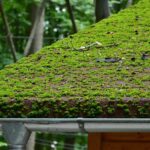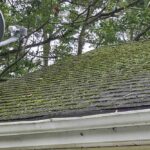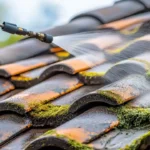Choosing the right roof drainage system is crucial for homeowners looking to protect their homes from water damage and maintain structural integrity. Whether you’re building a new house or upgrading an existing roof, understanding how to select an effective drainage system is key. In this guide, we will explore various aspects of selecting the ideal drainage system, ensuring that your home remains safe and sound.

Understanding the Importance of Roof Drainage
A well-designed roof drainage system is essential for preventing water accumulation on the roof. Unmanaged water can lead to leaks, structural damage, and mold growth. Therefore, it’s vital to invest in a drainage system that efficiently channels water away from your home.
Types of Roof Drainage Systems
Gutters and Downspouts
The most common type of drainage system involves gutters and downspouts. These components work together to collect rainwater and direct it away from the foundation of the house. It’s important to choose the right size and material for your gutters to ensure they can handle the volume of water typical to your area.
Internal Drains
Internal drains are often used in flat roofs. These drains are installed at low points on the roof and funnel water through pipes that run inside the building. This option is aesthetically pleasing as it hides the drainage system from view but requires careful planning and installation.
Siphonic Roof Drainage
For large commercial buildings, a siphonic drainage system can be highly effective. This system uses the principles of negative pressure to move water quickly and efficiently. While not common in residential homes, understanding its function can help when discussing options with contractors.
Factors to Consider When Choosing a Roof Drainage System
Roof Design and Structure
The design of your roof significantly impacts the type of drainage system you should choose. Sloped roofs typically require gutters, while flat roofs might benefit from internal drains.
Climate and Weather Conditions
The local climate is a major factor in deciding on a drainage system. Areas with heavy rainfall might need larger gutters and more frequent downspouts to manage water efficiently.
Material and Durability
Select materials that are durable and suitable for your climate. Aluminum and vinyl are popular for gutters due to their weather resistance and affordability.
Installation and Maintenance
Professional Installation
While DIY options are available, professional installation ensures that your system is correctly set up and less likely to fail.
Regular Maintenance
Regular cleaning and maintenance of your drainage system prevent blockages and extend its lifespan. Check out these DIY downspout repair tips for maintaining your system.
Cost Considerations
The cost of a roof drainage system varies based on the materials, complexity of the design, and labor. Its crucial to balance cost with the quality and durability of the system.
Environmental Impact
Consider systems that are environmentally friendly, such as those that include rainwater harvesting capabilities.
Choosing the Right Contractor
Hiring a reliable contractor is essential for proper installation. Look for experienced professionals with good reviews and a solid portfolio of past work.
Common Mistakes to Avoid
Avoid undersizing your gutters and neglecting regular maintenance. Both can lead to costly repairs and damage.
Conclusion
Choosing the right roof drainage system involves careful consideration of various factors. By understanding your homes needs and consulting with professionals, you can select a system that protects your home and investment. For more guidance, you can refer to this comprehensive guide on drainage systems.

FAQ
What is the best material for gutters?
Aluminum is often recommended due to its durability and resistance to rust.
How often should I clean my gutters?
Its advisable to clean your gutters at least twice a year or more frequently if you live in an area with heavy foliage.
Can I install a drainage system myself?
While possible, professional installation is recommended to ensure system efficiency and safety.
This article contains affiliate links. We may earn a commission at no extra cost to you.








